Abstract: Spinal arachnoid cysts are rare occurrences and are incidentally detected. This case is of an 18 year old man who developed paraplegia due to intrathecal arachnoid cyst. This was drained surgically with not much benefit to his paraplegia.
The cyst, furthermore, relapsed completely to the presurgical state. Classical homeopathic intervention was introduced at this point with gradual improvement and complete restoration of mobility and function. The man now pursues a regular job. The importance of thorough case taking and understanding of materia medica as is a rule in classical homeopathy is demonstrated in this case.
Keywords: Arachnoid cyst, spinal arachnoid cyst, congenital abnormalities, homeopathy
Background:
Spinal arachnoid cysts are relatively uncommon and usually detected incidentally during imaging. The cyst contains arachnoidal cells, collagen, CSF like fluid and can either be of congenital or acquired origin.1Arachnoid cyst affects males four times more frequently than females.2
They may be located either between the brain/spinal cord and the arachnoid membrane, which encloses them.1 Primary arachnoid cysts are congenital. Secondary arachnoid cysts arise as a result of trauma, Marfan’s syndrome, or as a complication of brain surgery, and are less prevalent than primary cysts.1
Arachnoid cyst is classified either as intracranial or spinal, depending on their location. Majority of intracranial cysts occur in the middle cranial fossa. Spinal cysts are uncommon.1 Cervical and thoracic cysts are discovered during adolescence and sacral cysts mostly remain undiscovered until adulthood.
Spinal arachnoid cysts are typically asymptomatic and can be classified as extradural, intradural or intrathecal, depending on their location. Intrathecal cysts occur between the arachnoid and the pia mater.1 The etiology of formation is uncertain but attributed to abnormal splitting during embryogenesis of the arachnoid membrane.
The etiopathogenesis is mostly understood based on case examples. 1,3The size, location of the cyst and degree of compression of the spinal canal and its nerve roots determine the symptoms causing radiculopathy in the lower limbs and eventually paraplegia.1
CT scan of the spine is frequently used to assess the contour of the spine during diagnosis. On a MRI (Magnetic Resonance Imaging), the cyst wall appears thin and transparent, which helps distinguish arachnoid cysts from other spinal cysts such as teratomas, dermoid and epidermoid cysts.1
Conventionally asymptomatic cases are excluded from treatment. Surgical techniques such as resection, fenestration, shunting, and percutaneous drainage of cysts are used to alleviate symptoms, but recurrences have been reported.4
Partial or complete hemilaminectomy is performed to ameliorate symptoms associated with spinal compression. Many studies exist which provide favorable outcomes for use of homeopathy in post-operative cases .5,6
Here, we discuss a rare case of an intrathecal arachnoid cyst treated with surgical intervention but relapsed and was cured with classical homoeopathy. The treatment helped to alleviate the symptoms, shrink the cyst and enhance overall health.
Case report:
An 18-year-old male presented to the homeopath with paraplegia on 19/04/2019. In February 2019, the patient developed sensory and motor loss below his chest region. On 28/2/2019, he underwent hemilaminectomy and drainage of the intrathecal arachnoid cyst under GA.
After the surgery, he started developing pain in the legs again and the sensory-motor loss relapsed, confining him to the bed. The MRI (Table 1) during first consultation revealed recurrence of the cyst with complete relapse to the pre-surgery state. At this juncture, the family sought homeopathic treatment.
Table 1: laboratory investigations of the case before homeopathic treatment
| February 2019 | April 2019: |
| · MRI scan revealed intrathecal arachnoid cyst at C7 – D3 level causing compression and thinning of adjoining cord which is pushed postero-laterally.
· MRI at Institute of Neurosciences, Kolkata further conducted a more detailed scan. The MRI showed evidence of extra axial cystic lesion in the anterior thecal space at D1 – D2 level. Size: 3.1 cm in CC dimension and 1.1cm in AP dimension, with cord compression. |
Repeat MRI: showed postoperative changes at D2 level and adjacent paraspinal muscles. Extra axial cystic lesion was noted in the anterior thecal space at D1 – D2 level, measuring 3.1cm in CC dimension and 1.1 cm in AP dimension, mainly on the right side and anteriorly compressing the spinal cord.
|
Chief complaints:
The boy presented with paraplegia and was bedridden. Following a thorough case taking, it was discovered that the boy attended a religious school where he was subjected to severe physical punishment, including being beaten with an iron rod.
He was threatened not to reveal this to anyone. The boy did not express this to anyone. Following this incident, he developed the pathology. His parents confirmed that he was a very sweet boy and used to never express his anger at home or outside. The symptoms taken for prescription are as follows:
- Suppression of emotions, anger. (+++)
- Paralysis lower limbs (+)
- Warm aggravation. (++)
- Right sided tumor of the spine (++)
Past history: no high fevers noted, no other major illness noted.
Family history: Both parents were healthy and there were no major health issues in the family
Laboratory investigations: during first consultation: (Table 1)
Diagnosis: Arachnoid cyst (G93.0-ICD-10)7
Case analysis and prescription:
The symptoms were repertorised as follows (Fig. 1)
Fig 1: Reportorial result on 19/04/2019 (Vithoulkas compass)
After a thorough case taking, Staphysagria 1M one dose was prescribed on 19/04/2019.
Materia medica: Prof. Vithoulkas describes the state of suppressed emotions but absence of bitterness in the remedy Staphysagria. These patients are very sweet.8 When examined further, few generalities also supported the remedy. The strategy of prescription was based on the essence of the case. The follow up of the case is provided in Table 2.
Table 2: follow up of the case
| Date: | Symptoms: | Investigation and analysis: | Prescription: |
| 3.7.2019 | Patient is able to stand.
Minor improvement noted. No new symptoms. |
(On 24.6.2019 )
Repeat MRI: showed evidence of intrathecal and extramedullary T2/FS hyper intense and T1 hypo intense cystic lesion is noted at C7-D2&D3 level. Size-3.1cm in cc dimension and 1.0 cm in AP dimension. Note-0.1cm Diminution of cyst in AP dimension |
Staphysagria 10M one dose |
| 23.11.2019 | Patient is now able to walk without support but incoordination of lower extremities still persists.
No new symptoms |
– | Staphysagria 10M-one dose |
| 15.1.2020 | Pain at operated site better, now able to walk 2 kms without incoordination, jar aggravation marginally.
Drawing pain from back to leg better. Now shouts when angry (+++) Conjunctivitis-left eye (++) lachrymation and hazy vision, photophobia from artificial light since 25 days. Warm aggravation (++) Thirstless (++) (Fig 2) |
Patient is expressing anger and we have a shift of symptoms for the first time in this case from neurological symptoms to symptoms of conjunctivitis. But it is persisting and hence, needs treatment | Pulsatilla 30CH one dose |
| 10.2.2020 | Cough since last 7 days, with stitching pain in dorsal region at the operated site
cough>warm drinks++ (Fig 3) |
We have URTI with troublesome and persisting symptoms which require treatment. | Silicea 30CH one dose
(Complementary relation to pulsatilla) |
| 19.2.2020 | Diarrhea since last night | No clear picture. | Placebo given. |
| 17.6.2020 | Pain at operated site<sitting (+)
Watering from eyes and purulent discharge from inner canthi. Patient is bothered by heat and need to uncover feet during sleep. (++) Diarrhea from fat food (++) Desires- Delicacies (++) The patient became more creative and started working and found a job (Fig 4). |
No Neurological deficit noted. | Pulsatilla 200CH-One dose
|
| 27.10.20 | Patient is having fever with cough and cold since yesterday.
Vertigo < sitting up in bed. Thirst has reduced compared to before. (Fig 5) |
Patient developed a fever, which needs to be treated.
|
Pulsatilla 200 one dose
|
| 13.1.21 | cough <evening (+), talking (++)
> sleep (+) pain sternum < coughing (+) (Fig 6) |
Again, an acute is coming up and is still troublesome, further treatment is required. | Rumex 200 one dose |
| 7.4.21 | Lumbago < turning in bed (+)
Lachrymation left eye (+) reduced. Patient is still intolerant to fat food (+++) No cough Weight70 kg Patient still cannot tolerate heat of summer (++) Jerking in muscles – on and off (Fig 7) |
No sign of neurological deficit.
Patient refused to undergo MRI due to financial constraints |
Pulsatilla 200 one dose |
Follow up repertorisations:
Fig 2: Reportorial result on 15/01/2020 (Vithoulkas compass)
Fig 3: Reportorial result on 10/02/2020 (Vithoulkas compass)
Fig 4: Reportorial result for consultation on 17/06/2020 (Vithoulkas compass)
Fig 5: Reportorial result on 17/10/2020 (Vithoulkas compass)
Fig 6: Reportorial result on 13/01/2021 (Vithoulkas compass)
Fig 7: Reportorial result on 17/04/2021 (Vithoulkas compass)
Discussion:
When the intensity of stress transcends the threshold of a person’s resistance, making the being helpless, pathology develops.9,10The severity of the developing pathology depends on past medical history and its treatments, genetic and epigenetic influences and one’s individual susceptibility.9
Prof. George Vithoulkas “levels of health” theory – consists of four groups (A-D), each with three levels (1-12) and provides a better insight into diseases and their treatment. Group A people are the healthiest and as the level descend down to group B, the immune system becomes more susceptible to recurrent infections. 11
When recurring infections are suppressed, the organism succumbs to stress and descends to group C to manifest chronic diseases, halting the appearance of acute diseases. 9,10 Incurable cases with compromised immune system belong to group D.
The above presented case corresponds to group C – upper level as there is no evidence of high fever in the recent past and pathology developed is deep despite no hereditary predisposition. In such cases, multiple remedies in proper series are required to elevate the health status10,9
Consequently, the appearance of acute diseases following treatment for the chronic disease is regarded as a good reaction, as the immune system cannot mount an acute inflammatory response in the presence of chronic illness.12,13 These acute diseases can be very severe and require careful and correct management in order to restore immune system to an improved condition.12,14,15
In the above case, once the right series of remedies was prescribed for 8 months, an acute conjunctivitis appeared. A noteworthy fever was produced after one and half years of successful prescribing, following which the chronic condition completely improved and no cyst was detected on examination.
The cyst relapsed despite surgery and completely regressed only when the cause of the disease was addressed with homoeopathy.16 One must also note that when pathology manifests due to epigenetic influence rather than hereditary predisposition, though the pathology is deep, a healthy defense mechanism can be stimulated towards cure more easily than when there is a heavy genetic predisposition.12,17
The Modified Naranjo Criteria for Homeopathy (MONARCH) causality assessment provided a score of 9, suggesting a significant causal relationship to the treatment (Table 3).This case suggests that classical homeopathy may be investigated for use in such cases.
Table 3: Modified Naranjo Criteria for Homeopathy (MONARCH) – for causality assessment
| Criteria | Y | N | Not sure/NA | Score in case |
| 1. Was there an improvement in the main symptom or condition for which the homeopathic medicine was prescribed? | 2 | -1 | 0 | 2 |
| 2. Did the clinical improvement occur within a plausible time frame relative to the drug intake? | 1 | -2 | 0 | 1 |
| 3. Was there an initial aggravation of symptoms? | 1 | 0 | 0 | 0 |
| 4. Did the effect encompass more than the main symptom or condition, i.e., were other symptoms ultimately improved or changed? | 1 | 0 | 0 | 1 |
| 5. Did overall well-being improve? | 1 | 0 | 0 | 1 |
| 6 (A) Direction of cure: did some symptoms improve in the opposite order of the development of symptoms of the disease? | 1 | 0 | 0 | 0 |
| 6 (B) Direction of cure: did at least two of the following aspects apply to the order of improvement of symptoms:- from organs of more importance to those of less importance, from deeper to more superficial aspects of the individual, from the top downwards | 1 | 0 | 0 | 1 |
| 7. Did “old symptoms” (defined as non-seasonal and non-cyclical symptoms that were previously thought to have resolved) reappear temporarily during the course of improvement? | 1 | 0 | 0 | 0 |
| 8. Are there alternate causes (other than the medicine) that with a high probability could have caused the improvement? (consider known course of disease, other forms of treatment, and other clinically relevant interventions) | -3 | 1 | 0 | 1 |
| 9. Was the health improvement confirmed by any objective evidence? (Clinical improvement of signs and symptoms in this case – patient recovered full mobility and function) | 2 | 0 | 0 | 2 |
| 10. Did repeat dosing, if conducted, create similar clinical improvement? | 1 | 0 | 0 | 0 |
| Total | 9 |
Conclusion:
While this case demonstrates a favorable outcome for treatment of post-surgical persistence of paraplegia in a case of arachnoid cyst through individualized classical homeopathy, extensive research is required to evaluate further possibilities.
References:
- McNutt SE, Mrowczynski OD, Lane J, et al. Congenital Spinal Cysts: An Update and Review of the Literature. World Neurosurg. 2021;145:480-491.e9. doi:10.1016/j.wneu.2020.08.092
- Arachnoid Cysts Information Page | National Institute of Neurological Disorders and Stroke. Accessed June 6, 2021. https://www.ninds.nih.gov/Disorders/All-Disorders/Arachnoid-Cysts-Information-Page
- Di Rocco C, Fabbro MD, Tamburrini G. Arachnoid Cysts. Cerebrospinal Fluid Disord. Published online October 3, 2022:380-399. doi:10.3109/9781420016284-23
- Jiménez Zapata HD, Utiel Monsálvez E, Jiménez Arribas P, et al. Spinal cord compression secondary to traumatic intradural arachnoid cyst. Neurocirugia. 2020;31(4):195-200. doi:10.1016/j.neucir.2019.07.002
- Mahesh S, Denisova T, Gerasimova L, Pakhmutova N, Mallappa M, Vithoulkas G. Multimorbidity After Surgical Menopause Treated with Individualized Classical Homeopathy: A Case Report. Clin Med Insights Case Reports. 2020;13. doi:10.1177/1179547620965560
- Vithoulkas G, Văcăraș V, Kavouras J, et al. Homeopathic treatment for prolonged postoperative coma: a case report. J Med Life. 2017;10(2):118. Accessed July 14, 2021. /pmc/articles/PMC5467251/
- 2021 ICD-10-CM Diagnosis Code G93.0: Cerebral cysts. Accessed June 7, 2021. https://www.icd10data.com/ICD10CM/Codes/G00-G99/G89-G99/G93-/G93.0
- george vithoulkas. The Essence of Materia Medica. B.Jain publishers; 1998.
- Vithoulkas G and Tiller.w. The Science of Homeopathy. 7th Edition.; 2014.
- Vithoulkas G. Levels of Health.; 2017.
- Vithoulkas G, Carlino S. The “continuum” of a unified theory of diseases. Med Sci Monit. 2010;16(2).
- Mahesh S, Mallappa M, Habchi O, et al. Appearance of Acute Inflammatory State Indicates Improvement in Atopic Dermatitis Cases Under Classical Homeopathic Treatment: A Case Series. Clin Med Insights Case Rep. 2021;14:1179547621994103. doi:10.1177/1179547621994103
- Mahesh S, Mallappa M, Tsintzas D, Vithoulkas G. Homeopathic treatment of vitiligo: A report of fourteen cases. Am J Case Rep. 2017;18:1276-1283. doi:10.12659/AJCR.905340
- Mahesh S, Shah V, Mallappa M, Vithoulkas G. Psoriasis cases of same diagnosis but different phenotypes—Management through individualized homeopathic therapy. Clin Case Reports. 2019;7(8):1499-1507. doi:10.1002/ccr3.2197
- Mahesh S, Jaggi L, Jaggi A, Tsintzas D, Vithoulkas G. Individualised Homeopathic Therapy in ANCA Negative Rapidly Progressive Necrotising Crescentic Glomerulonephritis with Severe Renal Insufficiency – A Case Report. J Med Life. 2019;12(1):49-55. doi:10.25122/JML-2019-0001
- Kent JT. Kent’S Lectures on Homoeopathic Philosophy. B.Jain publishers; 2002. https://www.naturopathicmedicineinstitute.org/wp-content/uploads/2016/09/Lectures-on-Homeopathic-Philosophy.pdf
- Mahesh S, Habchi O, Vithoulkas G. Cervical Intraepithelial Neoplasia Managed with Classical Homeopathy: A Case Report. Integr Med Reports. 2022;1(1):240-248. doi:10.1089/IMR.2022.0067

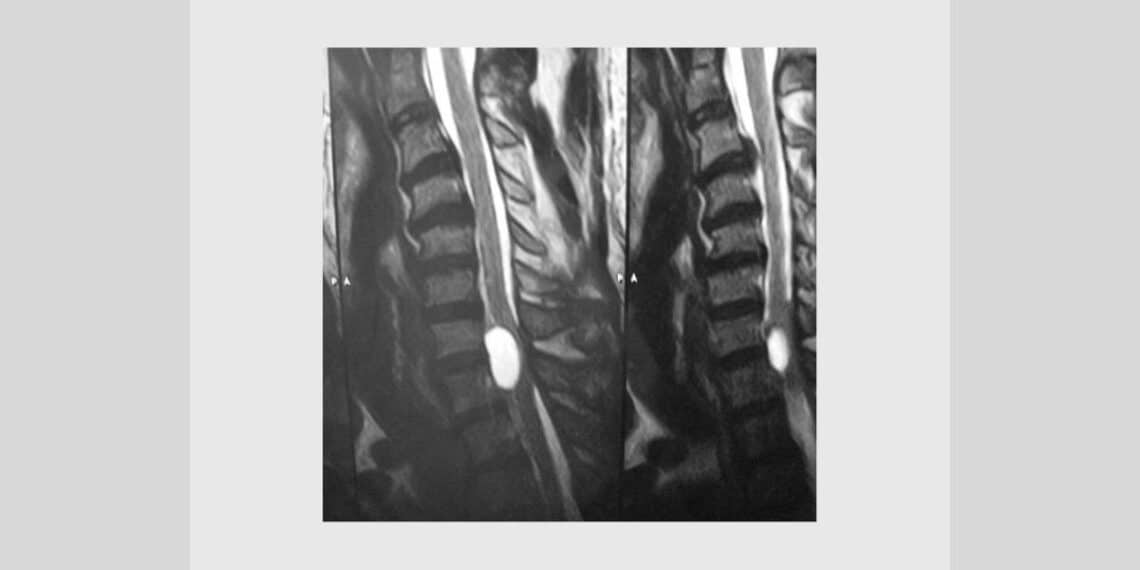
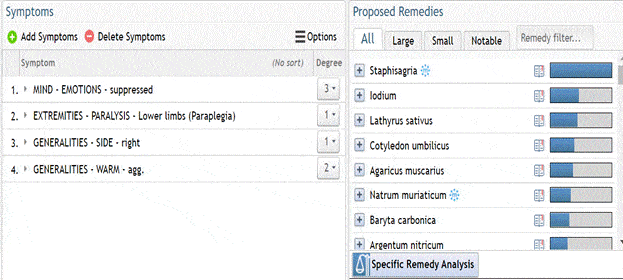
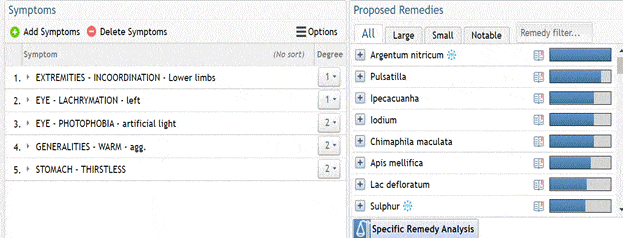
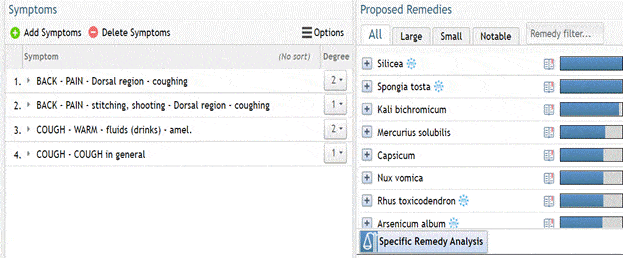

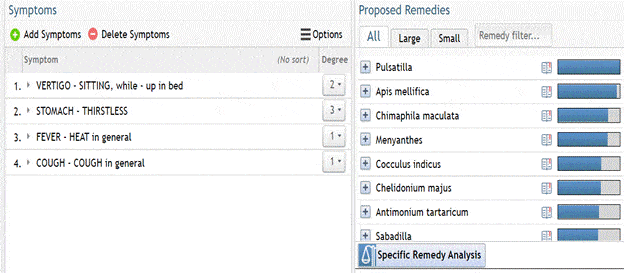
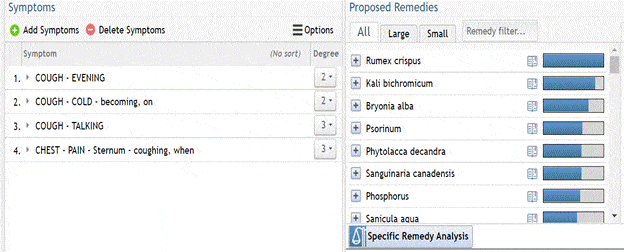
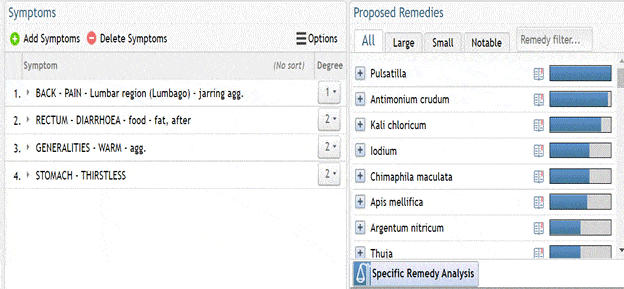
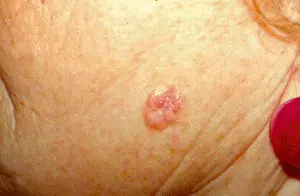
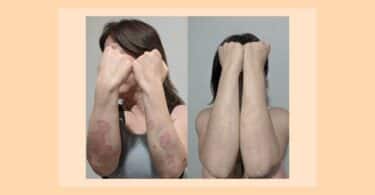
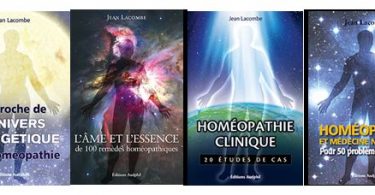
Great Case. Thanks for sharing
An extraordinary case and fine analysis. Patients that receive this level of homeopathic treatment are fortunate indeed.